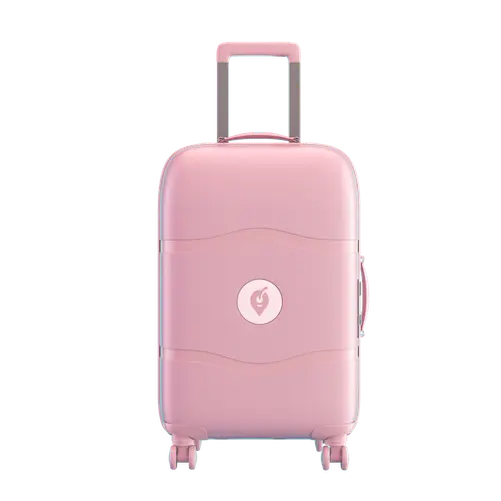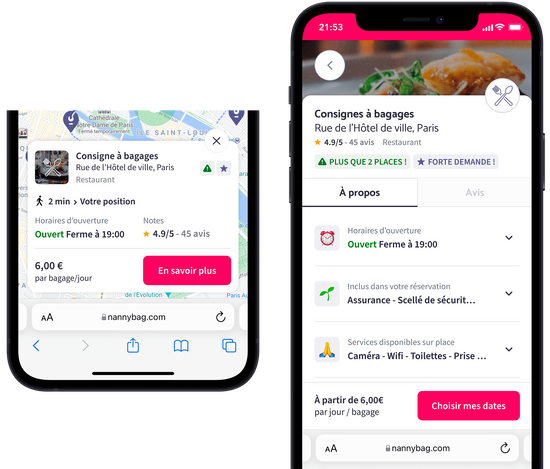The 10 Steps of Discovering Kreuzberg's Cultural Diversity

Kreuzberg, nestled in the Friedrichshain-Kreuzberg borough of Berlin, epitomizes the city's diverse and inclusive spirit. This vibrant district is a melting pot of cultures, histories, and artistic expressions, offering a rich tapestry of experiences that reflect the diversity and inclusion that define Berlin.
Discovering Kreuzberg is an exploration of Berlin's multifaceted cultural richness. From the poignant remnants of the Berlin Wall that speak of a divided past to the bustling streets alive with a diverse range of cultural influences, Kreuzberg presents a unique urban experience.
This guide will take you through ten steps to fully immerse yourself in everything Kreuzberg has to offer, ensuring that you experience the district's dynamic atmosphere, historical significance, and the inclusive culture that makes Berlin one of the most fascinating cities in the world.
Following your exploration of Kreuzberg's vibrant culture and history, you might need a convenient solution for your luggage. This is where Nannybag comes in, offering a practical service for luggage storage in Berlin. Nannybag provides secure and accessible luggage locker storage in Berlin, ensuring that your exploration of Berlin's diverse neighborhoods like Kreuzberg is unencumbered by the hassle of carrying your bags.
Step 1: Explore the Berlin Wall’s History
With its unique position along the former border of East Berlin, Kreuzberg holds key remnants of the Berlin Wall, offering a tangible connection to the city's divided past. A walk along these historic fragments tells the story of Berlin during the Cold War and provides poignant insights into the broader impact of World War II and the ensuing division of East and West Berlin.
These sections of the Wall, some adorned with graffiti and artwork, stand as silent witnesses to a time of separation and the eventual reunification, making them an essential visit for anyone looking to understand Berlin’s complex history.
Step 2: Visit Kottbusser Tor
Kottbusser Tor, often referred to as the heart of Kreuzberg, is more than just a busy intersection; it's a vibrant melting pot where the district's cultural diversity is most palpable. This area exemplifies the coexistence of different cultures and communities, visible in its eclectic mix of eateries, shops, and street life. The energy and atmosphere here testify to the district's inclusive spirit. A visit to Kottbusser Tor offers a glimpse into the everyday life of Kreuzberg's residents and the harmonious blending of various cultural influences that make this district unique.
Step 3: Indulge in Markthalle Neun
Markthalle Neun, nestled in the bustling heart of Kreuzberg, represents a culinary microcosm of Berlin’s rich and diverse food culture. More than just a traditional market hall, it's a vibrant center where the city's culinary scene comes to life. As you step into this historic market, you're greeted with a sensory feast of aromas, sights, and sounds that instantly captivate.
This lively market hall is home to food stalls and vendors, each offering their unique take on various cuisines. At Markthalle Neun, you can taste authentic local German specialties, which directly link to the country’s culinary heritage. From classic dishes like schnitzel and bratwurst to regional delicacies, these flavors are a must-try for anyone seeking an authentic taste of Germany.
But Markthalle Neun’s offerings go far beyond traditional German cuisine. Reflecting the multicultural fabric of Berlin, the market also features stalls serving a wide variety of international dishes. From Italian pasta and Asian delicacies to Middle Eastern flavors and African cuisines, each stall tells a story of cultural fusion and culinary creativity. This diversity not only adds to the vibrancy of the market but also offers a gastronomic journey around the world right in the heart of Kreuzberg.
Step 4: Reflect at the Jewish Museum
The Jewish Museum in Kreuzberg is a poignant and educational stop on your journey through Berlin. This museum provides deep insights into Jewish communities' history, life, and cultural contributions in Germany. With its thought-provoking exhibitions and striking architecture, including the iconic Libeskind Building, the museum offers a comprehensive narrative that extends beyond the Holocaust to include all aspects of Jewish history and culture.
The Jewish Museum is not only a place of learning but also a place for reflection on the diverse and often challenging threads woven together to form Berlin's rich historical tapestry. A visit here is essential for those looking to gain a deeper understanding of the city's complex past and the diverse cultural influences that have shaped it.

Step 5: Discover Street Art in Kreuzberg
Kreuzberg's streets offer a vivid tableau of street art, turning the district into a living, breathing open-air gallery. This vibrant street art is more than just aesthetic decoration; it's a powerful expression of the community's diverse voices and experiences. As you wander through Kreuzberg, you encounter murals and graffiti that do more than just color the walls – they tell stories, challenge perceptions, and comment on various social and political issues.
The street art in Kreuzberg reflects the district’s dynamic spirit and commitment to inclusivity and diversity. From large-scale murals that cover entire building facades to smaller, more intimate pieces tucked away in alleyways, each work contributes to the narrative of the area. These artworks often address themes such as freedom, identity, and community, offering insights into the concerns and aspirations of those living there.
Step 6: Embrace Art at Berlinische Galerie
The Berlinische Galerie, located near Kreuzberg, is a museum that plays a pivotal role in showcasing Berlin’s contemporary art scene. It is a treasure trove of artistic expressions that reflect the city's diversity and the role of inclusion in fostering creativity. The gallery's collection includes works from diverse artists, illustrating how embracing a diverse workforce in the arts can lead to innovative and groundbreaking cultural expressions.
The exhibitions here span various mediums, including painting, photography, and sculpture, offering insights into the evolving trends of Berlin's art scene. Visiting the Berlinische Galerie is not just an art viewing; it explores how diversity and inclusivity can shape and enrich the cultural landscape.
Step 7: Enjoy the River Spree
The River Spree, meandering through Kreuzberg, offers a picturesque pathway to experience the lively essence of the district. A stroll along its banks reveals a vibrant tapestry of life and culture. The riverfront is lined with various cafes, cultural venues, and open spaces where people from all walks of life come together, reflecting the district's ethos of cultural diversity and inclusivity.
This area is particularly lively during the warmer months, with impromptu music performances, art installations, and a general air of communal celebration. Observing the interactions along the Spree is a testament to how public spaces can foster community spirit and become a melting pot of different cultures, making it a must-visit for those who appreciate the dynamic interplay of urban life and nature.

Step 8: Understanding Diversity in the Workplace
Kreuzberg is not only culturally diverse in its streets and art but also in its professional environments. The district is home to numerous co-working spaces and diverse workplaces that exemplify the importance of cultural diversity in professional settings. These spaces often host a mix of entrepreneurs, freelancers, and creative professionals from various backgrounds, creating a melting pot of ideas and perspectives.
Visiting or even spending a day working in one of these co-working spaces can offer insights into how diversity drives innovation and creativity. It reflects how Kreuzberg, and Berlin as a whole, embraces diversity in its social fabric and professional ethos.
Step 9: Engage in Cultural Events
Kreuzberg is a hub for cultural events and festivals that celebrate and actively promote the community's diversity. The district hosts various events throughout the year, including music festivals, art exhibitions, street fairs, and cultural parades. These gatherings are vibrant displays of Kreuzberg’s rich tapestry of cultures, showcasing worldwide traditional and contemporary arts, music, and cuisines.
Participating in these events provides an opportunity to immerse yourself in the district’s dynamic cultural scene, interact with locals, and gain a deeper appreciation for the diverse cultures that coexist in Kreuzberg. These festivals and events, often marked by a spirit of celebration and inclusivity, reflect the district’s ongoing commitment to fostering a diverse and unified community.
Step 10: Contemplate at Memorial Sites in Kreuzberg
While pulsating with vibrant cultural and artistic expressions, Kreuzberg houses several deeply moving memorial sites. These places of remembrance offer quiet contemplation amidst the bustling urban environment. They stand as solemn tributes to the victims of war, oppression, and the turbulent political events that have left indelible marks on the district and the broader city of Berlin.
Visiting these memorial sites in Kreuzberg provides a poignant opportunity to reflect on the darker chapters of history. They offer a narrative that complements the district's more colorful and lively aspects, grounding visitors in the reality of past struggles and hardships. These sites vary in focus and presentation, but they commonly honor and remember those who suffered or lost their lives due to conflict, tyranny, and injustice.

Say hello to exploring and goodbye to heavy bags!
What if you could enjoy every minute in the city without the burden of your bags?
- Safe luggage storage for a flat daily price of 4,50 €/luggage item
- Included luggage protection of up to €10000 in case of breakage, loss or theft
